Lesson Three: Introduction, Objectives, and Procedures
Lesson Three: Introduction, Objectives, and Procedures
Introduction
You should have a conceptual understanding of functions from a prior grade. You probably remember the “function machine” where there is an input, a function is performed, and an output results. There is a pairing of the input and output, and each input is associated with exactly one output.
Chapter 3 extends this introductory understanding of functions and presents the notation of functions. Consistent use of the notation and language of functions will help you become more confident. Be sure to have your graphing calculator handy.
Lesson Objectives
After completing this lesson, you should be able to:
- determine the domain and range of a linear function in mathematical problems; determine reasonable domain and range values for real-world situations, both continuous and discrete; and
- represent domain and range using inequalities;
- write and solve equations involving direct variation;
- determine the slope of a line given a table of values, a graph, two points on the line, and an equation written in various forms, including y = mx + b, Ax + By = C, and sefgserrefarfaf ;
- calculate the rate of change of a linear function represented tabularly, graphically, or algebraically in context of mathematical and real-world problems;
- graph linear functions on the coordinate plane and identify key features, including x-intercept, y-intercept, zeros, and slope, in mathematical and real-world problems;
- determine the effects on the graph of the parent function f(x) = x when f(x) is replaced by af(x), f(x) + d, f(x – c), f(bx) for specific values of a, b, c, and d;
- decide whether relations represented verbally, tabularly, graphically, and symbolically define a function; and
- evaluate functions, expressed in function notation, given one or more elements in their domains.
Materials Needed
- Textbook: Big Ideas Math, Algebra 1
- Spiral notebook for notes
- Graphing calculator
How to Proceed
- Read the Introduction and Objectives for this lesson. They will give you an idea of the major concepts you need to watch for as you read, as well as the kinds of skills you will be expected to have at the end of the lesson.
- Survey pages 86-157 in your textbook. (Skim and/or look at the title, the introduction, the headings and subheadings, the graphics, and the important terms. The Chapter Review on pages 150-154 is a good place to see an overview of what you’ll be learning in Lesson Three.)
- Read the assigned pages in your textbook for each section of this lesson. The assigned textbook readings are given at the beginning of each Section Summary.
- Take notes on the assigned pages for each section. Pay attention to the list of key words in each section. The key words are important and should be remembered for future reference.
- Read the Section Summaries on the course homepage. They will help you to understand what you read in the textbook. Read and study all examples given in the textbook.
- Complete the Section Assignments neatly on paper to be scanned and saved as a PDF (see "Textbooks and Materials" in the Course Introduction). Show every step and box your answers as shown in the Sample Lesson Submission in the Resources section of this course. When you have completed all of the assignments, save them as a single PDF and upload your work using the Lesson Three: Assignment Upload.
- Review your notes briefly every day until you complete the course. After you have finished this lesson, you may proceed to Lesson Four.
Before You Begin
Before you begin this chapter, look through the whole chapter to become acquainted with what will be covered. Remember that each chapter has two sections labeled "What Did You Learn?". This part of the book lists the core vocabulary and core concepts. Make sure that you have all of the core vocabulary and core concepts written in your notes and defined. You may also want to add some examples.
Now look at pages 87 and 88. Work through Maintaining Mathematical Proficiency and Mathematical Thinking. This will serve as a review of some skills and topics that you should know and will also need for this chapter. Remember that when graphing a point, (x, y), the first coordinate, x, tells you how many to go left or right, and the y coordinate tells you how many to go up or down.
Also remember to not skip steps when evaluating expressions. This will help you not make careless mistakes.
Check your answers for Maintaining Mathematical Proficiency (page 87) in the Selected Answers section of your textbook, beginning on page A1.
Page 88 is very important. You must become very familiar with your graphing calculator. Keep your user manual handy. Don’t be afraid to use Google if you don’t know how to do something on your calculator. Understanding the viewing window is very important. It is just what it says, the screen or window on your calculator and what you are able to see.
Answers to Monitoring Progress (page 88)
- yes; 10 : 15 is a 2 : 3 ratio.
- no; 18 : 12 is not a 2 : 3 ratio.
- yes; 24 : 36 is a 2 : 3 ratio.
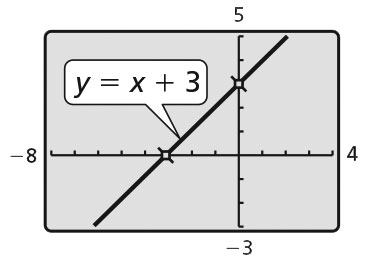
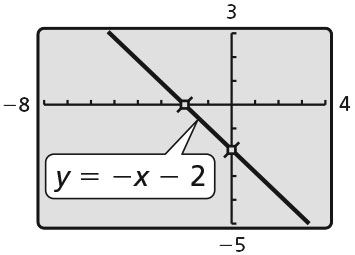
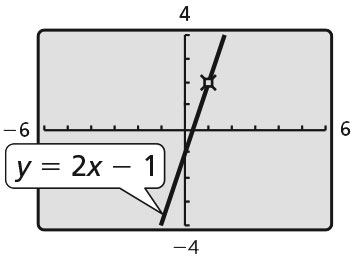
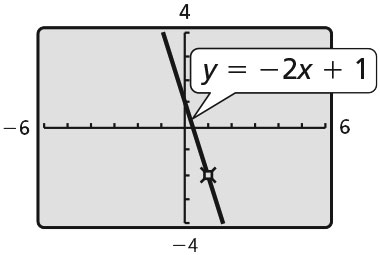
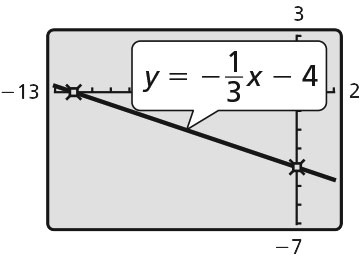
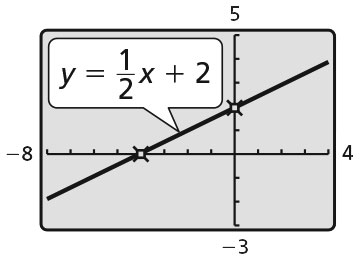
- The slope of a line in a square viewing window appears to be steeper than in a standard viewing window.
Texas Tech K-12
-
Address
Texas Tech Plaza | 1901 University Ave, Lubbock, TX 79401 -
Phone
(800) 692-6877 -
Email
ttuk12@ttu.edu

